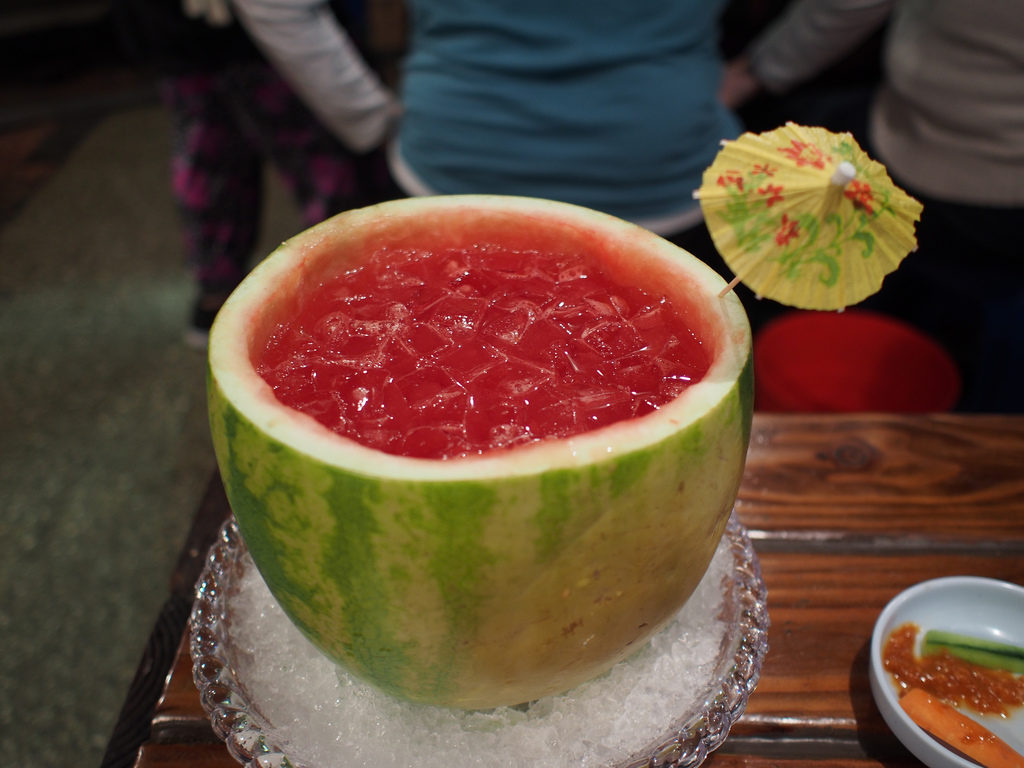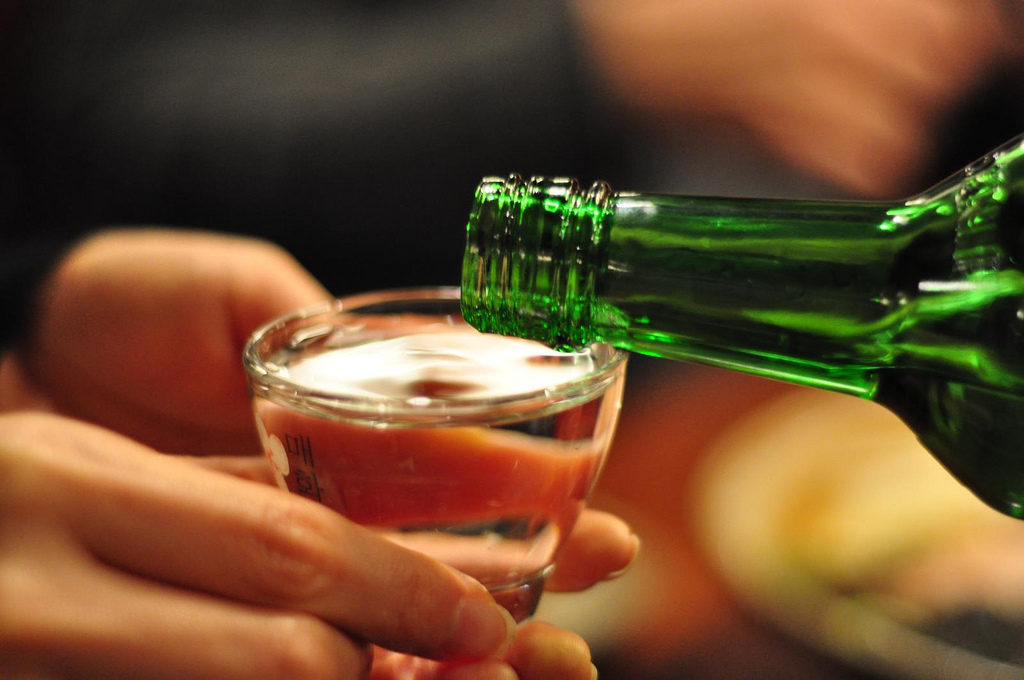Alcohol in Korean Culture
South Koreans are known to consume a lot of alcohol as it is an important aspect of their social lives. Historically, drinking was only something done during special events or gatherings but now it is prevalent in restaurants, pop culture, and convenience stores. Unlike the United States, Korea’s laws are generally not at restrictive on drinking. The legal minimum drinking age is 19 and alcoholic drinks are easily accessible through vending machines and most places that sell food.
Drinking is viewed as a great way to let people open up and connect through their hearts. The emphasis on bonding is even reflected in the etiquette which will be discussed further below.
Types of Korean Drinks
Soju
Among alcohol that originate from Korea, soju is the most popular and well-known liquor. Soju is made from grains and starches and is slightly sweet in flavor. It is a distilled, clear liquid and is usually served on its own in a small shot glass. Due to its low price (usually around one USD per bottle), it is very accessible all over Korea and is beloved by Koreans.

Soju manufacturers have also created different flavors of soju including peach, blueberry, citron, and more. Another popular drink made with soju is watermelon soju. It is made by cutting a small watermelon in half, emptying the insides of the watermelon, crushing the watermelon and pouring a bottle of soju, and then filling the watermelon with the mixed drink. This concoction is served at soju bars and is a popular shared drink for groups.
Makgeolli
Before the introduction of soju from Arabia to Asia, Makgeolli was the drink of choice for Koreans and it is the most traditional rice wine. It is a white, cloudy or milky liquid made by fermenting rice and is sweet in flavor.
It is served in bowls rather than glasses or cups to follow the tradition of the old drink. There are typically small grains of rice on the bottom of the bowl that can be eaten. Makgeolli can be found in many restaurants but is also sold in bottles from supermarkets.
Mixed Drinks
Koreans are known for their strong drinking and partying culture often depicted around large barbeque tables or noraebang (karaoke) rooms. To take things to the next level, modern day Korea has a few mixed drinks that are well-known across the globe.
One popular combination is called Somaek which is a mix of Soju and Maekju which is soju and beer. A common way to serve Somaek is by balancing shot glasses full of soju on the edge of lined up beer glasses and tipping them in together like dominos. There are other types of mixed drinks typically with a base of beer that is topped off with hard liquor and they are all called bomb drinks or poktanju.
Drinking Etiquette
In Korean culture, it is rude to fill your own glass and it is expected that others will keep an eye for empty glasses so no one else needs to pour for themselves. It is socially awkward to pour your own drink and it shows you are not looking out for the greater group. Koreans also care a lot about age hierarchy and it is also reflected in the drinking etiquette. When younger Koreans drink in front of older Koreans, they must show respect by turning away to drink their alcohol. This can be done simply by shifting your face and torso away so that you are not looking directly at the other person.

Another custom to keep in mind when drinking in Korea or with Koreans is to drink with two hands. This is another sign of respect for the people you are drinking around or the person who poured your drink for you. Using two hands to hold the glass or bowl is like a physical sign of gratitude or saying thanks. Finally, it is generally rude to reject offers to pour you more to drink. Therefore, it is better to leave some alcohol in your drink or to hide the alcohol rather than to reject a pour when your glass is empty.
Negative Social Impact
A hard drinking culture is rampant in Korean society and it is not all fun times. It is not uncommon to see people staggering through streets after having too much to drink or to see groups of men getting into altercations in public. The issue is that drinking is not just seen as something fun to do, it is also a necessary part of climbing the corporate ladder. Korean business people and salaried workers are often pressured to spend time with colleagues after work as a sort of bonding mechanism. It is considered rude to not go out with your coworkers to get to know them better and decompress together. Due to Korean cultures’ strong emphasis on the age hierarchy, younger employees feel like they must follow these customs in order to have favorable standing among their peers and superiors.
Business is also conducted over drinks as Koreans believe that is the only way people reveal their true selves. That is the way people network and establish professional relationships with people they deal in business with but it can obviously get to become too much. The Korean government does not have many initiatives about alcoholism or the health risks of over-consumption of alcohol and drinking has become ingrained as a commonplace habit among the masses.
However, with groups of people taking action against drinking such as the class action taken against alcohol manufacturers for using celebrities under the age of 24 to promote their products, many Koreans don’t think there is a problem. Koreans are under pressure starting from when they are children in school to perform well and it doesn’t stop when they enter the workforce. Some Koreans speak out against any criticism of their drinking culture because they think alcohol and socializing is a positive way to let some stress out. The conversation has not fully marinated within the modern Korean society but at least some people are starting it.